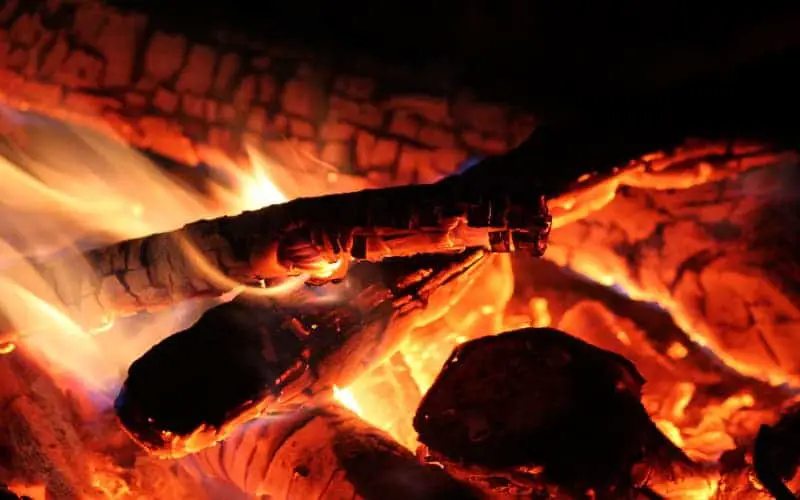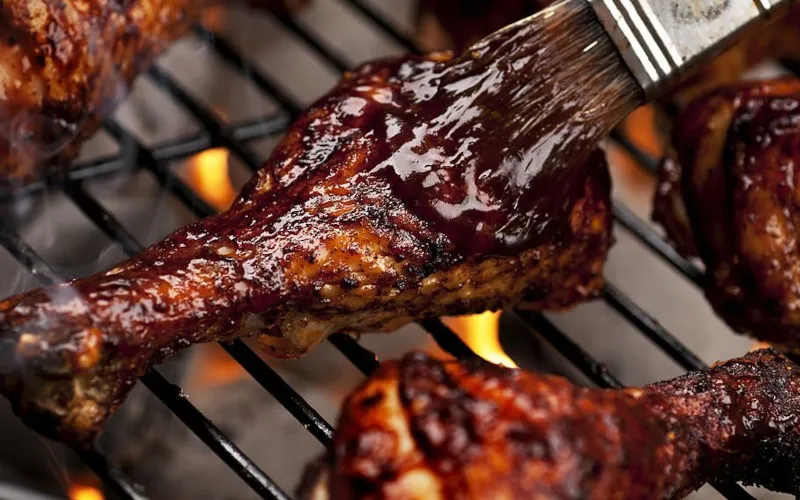Grilling makes food juicy, tasty, and moisturized, adding smoky flavors which tantalize the taste buds. You may want more grilled food each mealtime, especially when cooked precisely. However, to achieve the right smoky flavors, you must clean the grill to avoid the burnt aroma from the fats in the grease trap.
The burnt grease may make the food bitter, thus making it hard to enjoy your food. Fortunately, you can learn to clean the Traeger grease traps with simple and effective steps.
This is how to clean the Traeger grease trap and achieve delicious meals every time you cook the food.
5 Steps Process to Clean the Traeger Grease Trap
Step 1: Clean the Grease Drip Bucket
The grease drip bucket can accumulate the grease during the cooking process, and it may get clogged with fat from different meats and juice from the vegetables. The fats in the grease bucket might catch fire when cooking and damage your appliance.
Moreover, when the fats in the grease bucket burn, it results in smoke, leading to undesired bitter, smoky flavor in the food.
Step 2: Let the Grill Cool for a Day
Before you clean the Traeger grill, it would be better to let it cool down and rest for 24 hours. Then scrape off the debris and fat with a nonabrasive cleaning pad that does not damage your appliance. The wooden stirring stick might be the best option for scrubbing the Traeger grill as it does not cause friction on the appliance.
Friction might be the immediate enemy for your grill as it leads to the peeling of the paint, corrosion, and rusting. You may use paper or microfiber cloth to remove the grease from the appliance.
Step 3: Clean the Grills
The grills hold the meat and other food during the cooking process and deposit debris and fat. Thus, washing them is an important step. Sometimes, you might remove most dirt when you wash them immediately after cooking. The debris and fats will detach from the grill easily when hot.
However, cleaning the grills while hot may cause corrosion, pitting, and oxidation of the top metal layer predisposing your grill to the components resulting in rusting. If you don’t get the grease off the grills during the routine cleaning when the grill is cold, you might try to clean off the grease later when the grills are hot.
You may notice that with every consecutive cooking, the grills will attract tar, dirt, grease, and ash, which may be harmful to your health. These pollutants produce smoke which interferes with the food taste and is harmful to your health.
You should use the normal brushes which don’t damage the grills; metallic brushes remove the top metal layer from the grill exposing the deep layers resulting in rust. A wet-dry vacuum cleaner may efficiently remove accumulated oil, dirt, and other substance from the grills.
Step 4: Remove the Chimney Cap
You will remove the chimney cap and clean it with lukewarm water and a mild detergent. Degreasing with warm water removes all the fat deposits on the chimney. However, the water may not remove all the grease from the chimney, but it makes it loosen the grip from the surface and easy to wipe it off with a paper or soft cloth.
After removing the grease from the chimney, you can clean it with warm water, soap, a soft towel, and rinse. Then let it air dry
Step 5: Remove the Grills, Chimney, and Grease Trap and Put Them Aside
The grease trap holds the grease, which flows from the grills during cooking, and you can pour this grease into the trash can. You may not need to clean the grease trap thoroughly each time you clean your grill, but it is better to ensure it is as clean as the rest of the grill components.
The non-abrasive tools will remove the sticky grease from the grease trap. If you have an issue removing all the grease, you can dip the grease traps in degreasers that rid the grease trap.
Then put back the grease trap, fix the grill chimney cap, and cover the Traeger grill. The grill will be in the best working condition after the thorough cleaning, and you will be ready to cook any food. Cleaning eliminated accidental fires’ bitter and sour taste on the grease traps and elongated the Traeger grill lifespan.
Maintaining and cleaning your grill seems like an easy task. It is better to keep your cleaning game up and maintain consistency for a better cooking experience and elongating the appliance’s lifespan.
What is the Grease Trap on the Traeger Grill?
The grease trap is a barrier that redirects cold some towards the chimney and is an important component in the Traeger grill. Unfortunately, the grease trap can accumulate grease and dirt, leading to fires in the appliances.
Sometimes when the grease trap is dirty, your Traeger grill will tell you to clean it. Thus cleaning the grease trap makes the appliance work effectively, leading to good performance.
Failure to clean the Traeger grease trap may lead to a grease fire, and you should read the maintenance effectively to achieve better cleaning outcomes. Therefore, monitoring the grease trap for pooling is better to avoid grease fire. The grease should flow smoothly o the drip tray.
Where Can You Find the Grease Trap on the Traeger Grill?
Grilling involves cooking high-fat and juicy food, and the fats might make your Traeger grill dirty and lead to a fire hazard. Fortunately, the grease traps prevent these accidents, and they are located in the Traeger appliance underneath the grills.
The grills have a grease management system that involves the grease channel, grease chute liner, and traps.
Although these components prevent fat burning and accidents, they require frequent cleaning to keep the appliance in good condition, elongating its lifespan.
The grease from the grills falls into the drip tray, flows into the channel, and comes out of the chute and into the grease collection trap. Thus, the grease trap is the final destination for the grease, and you should often clean and empty the traps to keep the Traeger grill in good working conditions.
The frequency of cleaning the grease traps depends on how many times you use your appliance. For instance, if you use it for almost five days a week, you would clean it weekly. However, if you use it for cooking daily, you may clean it once every 2 or 3 days.
The more you use the grease, the more the fat and grease accumulate on the traps, making it necessary to empty and clean them. If there is some stash when grilling your food, you may need to clean the grease trap, and if you avoid cleaning it, your appliance may get into trouble later.
Why Does My Traeger Grill Keep Telling Me to Clean the Grease Trap?
Most Traeger grills are Wi-FiRE-enabled, and it would send messages which enable a user to manage their appliance appropriately. If it tells you to clean the traps, it means the traps have grease deposits which might cause a fire hazard.
Thus, it is better to follow the instruction from the manufacturer to keep the grease trap in good condition all the time. However, even if your grease trap is clean, your appliance may keep sending messages to help you create good grill maintenance habits.
The notification message will not prevent you from using your Traeger grill. Rush, you can clean the grease tray if it’s dirty or disable the message when the tray is clean. You may opt for the menu, go to the settings, and clear the specific notification.
When Do You Need to Clean the Grease Trap on Traeger Grill?
Although you should clean the grease trap as necessary or when you receive the notification, it is better to do it every week, especially if you use the appliance at least five days a week. If you use the appliance every day, you may clean it after two days.
You may follow the directions from the Traeger notifications and look out for the amount of grease in the trap.
How to Season the Traeger Grill?
It is necessary to season the Traeger grill before BBQ, smoking, and cooking food. Seasoning may be the initial step before you start cooking your food, and without it, you might burn your food; thus, it is wise to learn some seasoning tips for the best experience in the kitchen.
Seasoning gets rid of debris and odors and protects your appliance from corrosion and rust.
Seasoning may seem like cooking with spices, but it differs from the Traeger smoker. Seasoning for a pellet grill may refer to curing and pre-seasoning, which prepares the equipment for looking.
These seasoning steps may be necessary when cooking with your Traeger grill:
- Start by assembling and plugging the grill into a fuel source such as propane gas or electricity. The button should be on-off when plugging the frill into a heat source.
- Check to ensure the button is on O, which indicates off.
- Then fill the hopper with some wood pellets of your choice, which offer the right flavor for the food; a half-empty hopper is ideal for any meal. The wood pellets should be enough to maintain safety and first burn.
- After adding the pellet, you can turn the Traeger grill on and cover the hopper with a lid.
- Dial the auger, choose the primer auger, and click turn-off once the pellets fall into a firepot.
- Press the ignition key and let the grill reach 350°F for about 20 minutes. Adjust the temperature as needed.
- When it reaches 450° F, you can let it sit for 30 mins before shutting down the grill.
- After shutting it down, the grill, the seasoning will be completed.
- Select the auger and start priming; priming happens when there is a little countdown on the menu.
- The auger will be rotating, and some pellets may come through the auger, and you should ensure the auger is rotating slowly. If it is running, you may hear the whirring sound, and if you turn the controller, it may rotate for a few seconds.
- The auger may turn on and off for a few minutes, and you should ensure you complete the priming process before moving forward to the next step.
- The grills will be ready for cooking your favorite meals, and you can clean the racks with a moistened cloth after the grill cools and shuts and down.
It is good practice to season the grill before using it and ensure it is done in a well-ventilated room or the outdoor kitchen.
FAQ
Why Should I Season the Grill?
Seasoning the grill removes debris, dirt, impurities, and solvents and leaves it ready for cooking your meals. It removes the odors that may tamper with the food taste and allows the pellets to season, adding the grilled flavor, which makes the meat smoky
Should I Prime the Auger Often?
Auger is an initial process during seasoning, and you may not repeat the process often as there is no need to auger every time you cook.
Why Do I Get the Notification to Clean the Traeger Grease Trap?
The grease trap accumulates the grease from the grills during cooking, and it can cause a fire hazard when left to accumulate over time. Thus, you should clean the grease trap often.
Your Traeger grill may send a notification to remind you to clean the grease trap, which is essential for creating a health care routine for your kitchen appliance.
Conclusion
Cooking with a grill might be the best way to achieve the desired meal as it leads to juicy and crunchy meats and tasty vegetables. However, your grill might become dirty over time, and you should learn how to clean the Traeger grease trap. Cleaning the grease trap removes the dirt, grease, and odors that may impact the food taste.
Additionally, the grill may catch fire without proper sanitation as the grease on the trap is likely to burn and become a health hazard. You can start by turning off the grill and letting it cool for a day, cleaning the grease drip bucket, chimney, and grease trap.
Using mild detergents and soft clothes is better to prevent corrosion and rusting. Finally, it would be wise to let the Traeger grill air dry before assembling, seasoning, and cooking the next meal.





